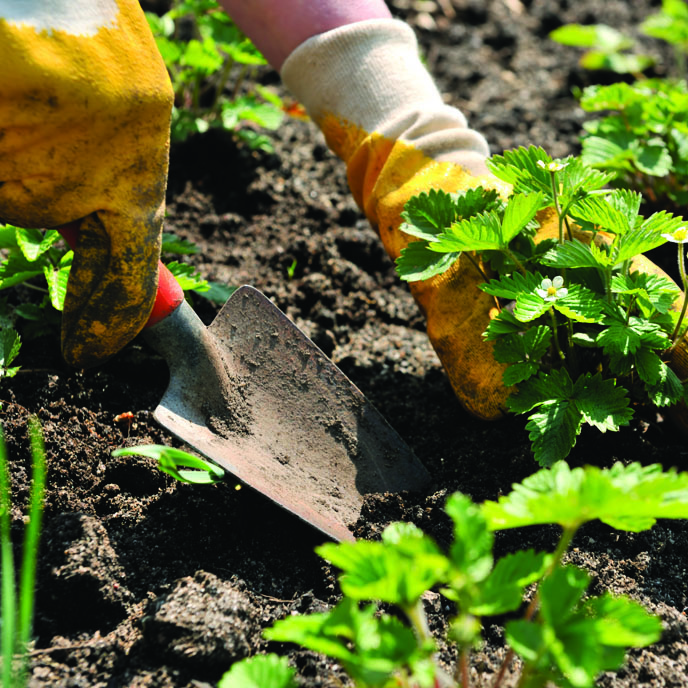Sustainable Gardening Practices for an Eco-Friendly Yard
Sustainable Gardening Practices for an Eco-Friendly Yard
Blog Article
The Comprehensive Guide to Gardening: Discover the Advantages of Different Designs and Strategies
Horticulture encompasses a diverse range of styles and techniques, each offering one-of-a-kind benefits tailored to private preferences and ecological contexts. As we discover these various designs, it ends up being noticeable that the selections made can substantially influence both the yard's health and wellness and its contribution to the surrounding setting.
Comprehending Horticulture Fundamentals
Comprehending the basics of gardening is necessary for growing a flourishing and lasting garden. A successful gardening undertaking starts with a strong structure of understanding relating to dirt, plant option, and environment factors to consider.
Selecting the right plants is equally crucial. Recognizing their certain demands-- such as sunshine, water, and spacing-- makes sure compatibility with the regional environment and dirt problems. This option process need to additionally take into consideration the development behaviors and lifecycle of plants, enabling for a balanced and aesthetically pleasing yard.
Additionally, effective sprinkling practices are crucial. Over-watering and under-watering can both bring about plant anxiety and disease. Executing a schedule based on seasonal changes and plant demands can boost water performance.
Popular Horticulture Styles
What defines the significance of prominent gardening designs? Among the most prominent designs is the cottage yard, identified by its informal format and a vibrant selection of flowers and veggies.
Alternatively, the formal yard symbolizes symmetry and order, often including geometric patterns and carefully cut bushes. This style connects beauty and sophistication, with thoroughly selected plants that enhance a structured aesthetic.
The Japanese garden supplies a calm and meditative experience, making use of natural environments like water, stones, and plants to produce a serene setting. It concentrates on simpleness and balance, motivating contemplation.
In addition, xeriscaping has gotten appeal, specifically in deserts (Gardening). It focuses on drought-resistant plants and reliable water use, promoting sustainability while improving landscape beauty
Benefits of Container Horticulture
Container horticulture provides a wide range of benefits that make it an enticing choice for both amateur and seasoned garden enthusiasts alike. One of the main benefits is adaptability; containers can be positioned in numerous places, allowing gardeners to optimize sunlight direct exposure and develop aesthetically appealing plans. This adaptability makes it possible to garden precede where conventional in-ground horticulture may not be practical, such as verandas, patio areas, or city settings.
In addition, container horticulture gives better control over soil conditions. Gardeners can tailor the dirt mix to fit particular plants, guaranteeing optimal drain and nutrient schedule. This is particularly helpful for individuals staying in locations with bad or polluted dirt.
One more significant advantage is the decreased danger of bugs and conditions. Container plants can be monitored more easily, and any problems can be dealt with immediately. In addition, this method can minimize the spread of invasive varieties.
Lasting Gardening Practices
Lasting horticulture methods are important for advertising environmental health and wellness and boosting biodiversity in our ecological communities. These methods focus on ecological equilibrium, source conservation, and making use of natural approaches to reduce unfavorable ecological impacts. By employing methods such as composting, garden enthusiasts can lower waste while enhancing dirt health moved here and wellness, therefore fostering a growing garden ecological community.
Water preservation is an additional vital aspect of sustainable gardening. Methods such as rainwater harvesting, drip irrigation, and using drought-resistant plants can significantly decrease water usage while making sure that plants obtain adequate moisture. Incorporating indigenous plant types right into garden layouts sustains local wildlife and decreases the need for chemical fertilizers and chemicals, which can be harmful to the setting.

Eventually, lasting horticulture techniques not only contribute to healthier gardens but likewise advertise an even more resistant atmosphere, offering long-lasting advantages to both the garden enthusiast and the bordering community.
Tips for Successful Gardening
To cultivate a successful yard, garden enthusiasts should prioritize careful planning and thoughtful implementation of their gardening methods. Begin by analyzing the neighborhood climate and soil conditions, as these elements dramatically affect plant choice and development. Select plants that are appropriate to your setting, taking into consideration indigenous species that will love very little treatment.
Applying a well-structured layout is vital (Gardening). Use buddy growing methods to advertise biodiversity and all-natural pest control, while making certain each plant has appropriate space for growth. This not just enhances aesthetics yet additionally boosts total plant health and wellness
Routine maintenance is key to an effective garden. Develop a regular timetable for watering, weeding, find more and feeding. Mulching can assist keep dampness and suppress weeds, while likewise including raw material to the soil.
Don't undervalue the value of observation. On a regular basis checking click here for more info plant wellness and growth will certainly enable for timely treatments. Be open to discovering and adapting; horticulture is a continuous procedure that profits from experience and testing. By prioritizing mindful planning, implementation, and continuous maintenance, gardeners can attain a dynamic and effective garden that prospers throughout the seasons.
Conclusion


In recap, the exploration of diverse horticulture designs and methods reveals their diverse advantages, contributing to both aesthetic appeal and environmental health. Container horticulture provides versatility and ease of access, while lasting methods enhance environmental stewardship.
Report this page